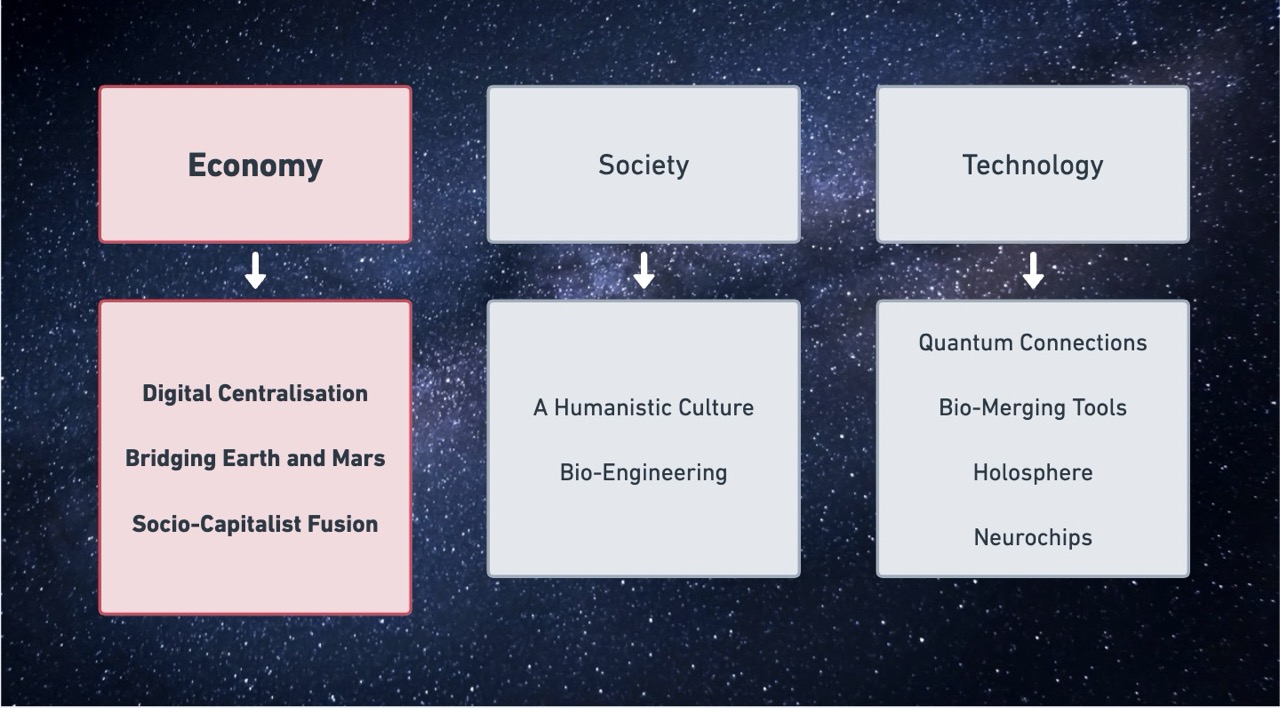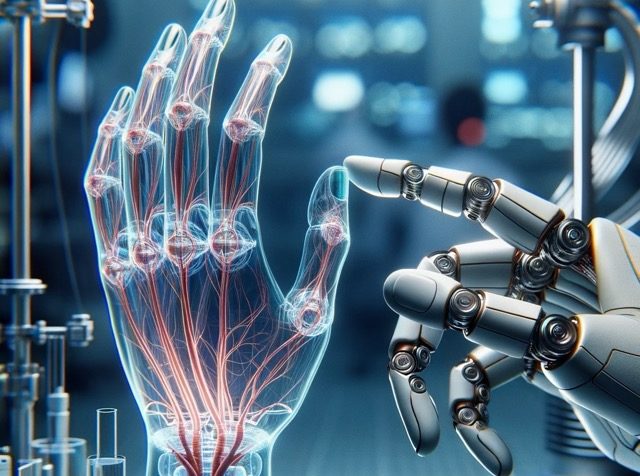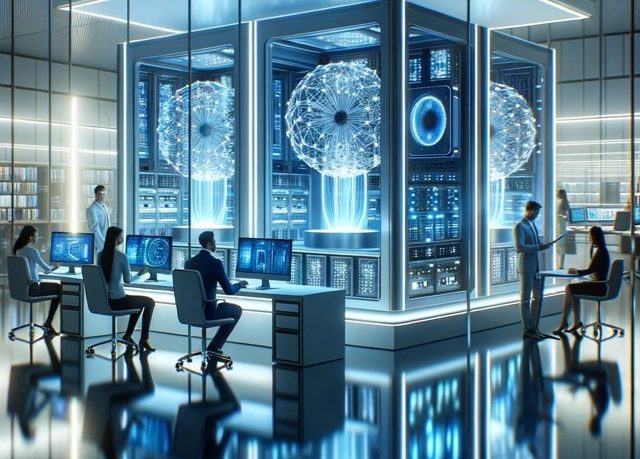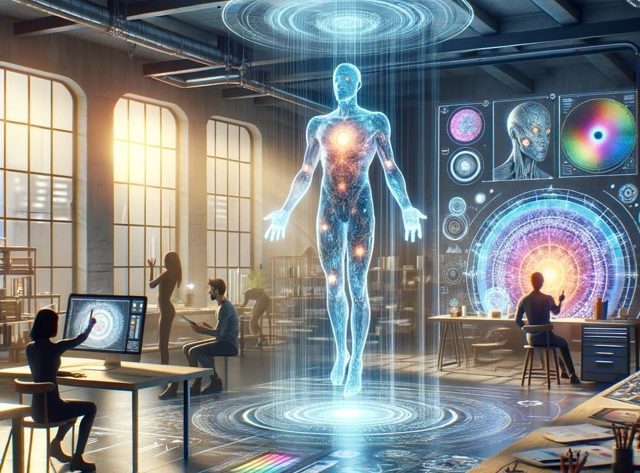30 sec summary
Have you ever wondered what the future of human resources would look like? Let’s imagine HR in a millennium from now. Would businesses span across planets? How would HR adapt to such vastness?
The future of HR arises many questions, especially the development of machines and AI. Will the human workforce decrease? How would HR maintain a sense of unity and fairness between human workers and machines? How would HR approach global hiring and dialogue?
If technology, like neurochips, were to grant insights into an individual’s deepest thoughts and feelings, how would HR use this knowledge while respecting one’s privacy?
While the future remains a mystery, let’s take a moment to reflect on these potential scenarios, for they offer a glimpse into what might lie ahead.
TABLE OF CONTENTS
- A Millennium Forward: What HR will look like in 1000 years?
- Future Landscape of HR in a Shifting Economy
- Future Landscape of HR in a Shifting Society
- Future Landscape of HR in a Shifting Technology
- Use This HR Software To Automate Your Team ✅
As we have watched our world progress and flow for many years, we have observed many things. Now we look ahead, and it’s clear that three main areas – our economy, our society, and our technology – are on track for significant transformations.
With all these changes, how will the field of Human Resources adjust?
We’re putting together some hypothetical musings to spark some thought about our species’ journey and HR’s future. We should approach these ideas with an open mind, realizing they aren’t predictions, but rather imaginative scenarios
Future of Human Resources in a Shifting Economy

In a millennium, the economic landscape may shift entirely, with interplanetary economies replacing traditional global systems. As a result, human resources will need to evolve beyond its current framework to meet these new complexities.
The fusion of economic systems, the rise of centralized digital monetary control, and the expansion of human endeavors beyond our home planet could need a radical transformation in how businesses operate and manage their most valuable asset: their people.
We’re going to explore the implications of economic shifts for HR and what it could possibly look like navigating the challenges and opportunities of a vastly changed economic environment.
The Digital Payroll Revolution: Centralization’s Impact on HR
HR professionals may not be as crucial for businesses as they are now. As technology advances and global integration reach their peak, centralization of systems might be the norm rather than the exception, especially in the economy.
There’d no need to have multiple systems when this central authority, potentially a global or interplanetary central bank, is capable of overseeing and regulating all monetary transactions.
Having a centralized structure would not only change the way businesses operate, but would also have a big impact on traditional payroll functions. Let’s take a closer look at this potential future and see how it might change HR and how it manages employee compensation in the future.
HR’s Role in the New Payroll Paradigm:
- Regulatory Affairs: In a future where centralization might dominate, HR departments may see an expansion in their roles. There might be a surge in the need for dedicated teams within HR that’d liaise directly with the central bank. Such a centralized system would introduce a lot of complex and constantly changing payroll regulations, so they’d need to figure them out and make sure they’re in compliance.
- Employee Advocacy: The role of human resources would become even more important as companies might give up direct control over payroll in this centralized future. HR would probably become the primary advocate for employees, championing their rights and negotiating directly with regulatory authorities. They’d make sure employees get good pay, bonuses, and benefits based on their work.
- Payroll Educators: All employees would have to understand the nuances of the centralized digital monetary system of the future if they want to survive. HR departments could then take on the role of educators, making sure everyone knows how the payroll system works and how it affects them. In order to ensure transparency and trust in the system, this education would be crucial.
How HR Teams will Manage the Interplanetary Workforce:
- Interplanetary Labor Law Specialists: As labor laws might span planets, new roles would likely be created to ensure compliance and mediate disputes against labor laws that would span planets. These specialists would work to ensure that legislation is adhered to and would mediate any labor disputes between planets.
- Physics and Environmental Onboarding Experts: To potentially facilitate a smooth transition for employees considering relocation to Mars, HR might incorporate experts in physics and Martian environments. Their role would be to ensure that habitats are safe, help staff familiarize themselves with Martian gravity, and assist them in adjusting to what could be a new lifestyle on Mars.
- Advanced Tech for Remote Management: Given that teams might be scattered millions of miles apart, HR would likely utilize quantum communication tools, holographic presence technology, and AI-driven management systems to ensure the smooth operation of the business.
- Onboarding in Alien Landscapes: The Martian onboarding process might include acclimatization programs, cultural immersion sessions, and training in the use of advanced technology native to the planet.
- Interplanetary Expense Management: HR would possibly deploy advanced AI-driven tools to manage the intricate nature of travel expenses between planets. These tools would take into account variables such as space travel tariffs and interplanetary currency rates, among others.
- Time Management Across Worlds: Since Mars has a different day length than Earth, HR would need to come up with innovative ways to determine how best to synchronize work hours, manage shifts, and ensure productivity while respecting the natural rhythms of each planet.
The Fusion of Economic Ideals: HR’s Role in the Socio-Capitalist Era
In this hypothetical future, there could be no more dichotomy between socialism and capitalism, rather employees will be able to choose their economic work model depending on their preferences and roles.
It might take a millennium for our economic systems to really change. With a thousand years’ view, rigid boundaries that once separated economic ideologies like socialism and capitalism could really dissipate.
In a socio-capitalist landscape, this fusion of economic ideals would require HR to adapt and innovate.
HR’s Dual Approach to Socio-Capitalism:
- Incentive-Driven Capitalist Framework: Should a company decide to operate under a capitalist model, Human Resources might place a strong emphasis on nurturing creativity and innovation. Performance metrics would likely be linked to the generation of ideas, and rewards would potentially be structured around tangible outcomes.
- Stability-Centric Socialist Framework: There might also be a heightened focus on ensuring quality of life, job security, and consistent work hours for employees who would lean towards a more structured, manual role. HR would likely ensure that their compensation aligns with regulated standards and would strive to maintain a stable atmosphere in the workplace.
- Work-Life Balance in Dual Systems: Within the capitalist framework, HR could lean towards promoting flexible hours, offering sabbaticals for creative rejuvenation, and adopting a results-driven approach. Conversely, in the socialist model, the emphasis might shift towards fixed, regulated work hours, ample rest periods, and fostering community-driven recreational activities.
Future Landscape of HR in a Shifting Society

The Emergence of a Unified Humanistic Culture
Progress in this realm might be the slowest because cultures are deeply rooted.
A millennium from now, the world might witness a convergence of diverse cultures into a singular, overarching humanistic culture. As the distinction between man and machine could become more ambiguous, a culture emphasizing human attributes would likely become priority. Intercultural exchanges might occur in realms where both virtual and physical realities coexist, spanning across various dimensions and planets.
HR’s Potential Role in Navigating this Hypothetical Cultural Landscape:
- Cultural Integration Specialists: There might be specialized HR teams focused on facilitating the integration of employees from diverse cultural backgrounds, including those from other planets, into organizations.
- Virtual-Physical Reality Mediators: Their role would possibly involve ensuring that employees are adept and at ease in both virtual and physical environments, promoting a fluid transition between the two.
- Intercultural Communication Trainers: Should cultures intermingle across planets, HR would likely emphasize training employees in interplanetary communication and customs, recognizing the blend of cultures.
- Emerging Roles: We might see roles like “Virtual Workspace Designers” who craft ideal virtual offices, or “Reality Transition Therapists” aiding employees in transitioning between the tangible and virtual realms.
Intersection of Bioengineering and the Superhuman

Superhumans might come out of a future where science is constantly pushing its boundaries. By combining genetic modifications, biomechanical augmentations, and nanotechnology, these beings could have capabilities far beyond those of contemporary humans. They might be able to work hard, resist diseases, and survive for more than 100 years because of their enhanced physiologies.
Not only that, with enhanced work capacities, superhumans could outperform pure humans in professional fields. This would raise ethical questions about their creation, rights, and role in society.
HR’s Hypothetical Approach to an Inclusive Bio-Engineered Future:
- Bio-Ethics Officers: These HR professionals would likely be tasked with ensuring ethical practices concerning bio-enhanced employees, promoting fairness and preventing any form of discrimination.
- Extended Career Pathing: Given that superhumans might work up to the age of +100, HR would potentially need to conceptualize extended career trajectories, allowing for continuous growth even in advanced ages.
- Team Activities in a Dual Reality: Future team-building activities might encompass virtual terrains, interplanetary cultural exchanges, and even retreats transitioning from virtual to physical realities.
- Inclusivity Workshops: HR departments could regularly host sessions to nurture a deeper understanding and camaraderie among bio-enhanced individuals, pure humans, and robotic entities.
- Challenges and Solutions: HR departments might grapple with issues like biases against bio-enhanced individuals or conflicts stemming from varied physical capabilities. Potential solutions could encompass awareness drives, the establishment of bio-neutral work zones, and ensuring diverse representation in decision-making.
In this projected societal and cultural scenario, HR would serve as the guiding light, helping organizations navigate through these unexplored terrains. Their role would be crucial in fostering harmony, inclusivity, and efficiency in a world where the very definition of ‘human’ is in constant change.
Future Landscape of HR in a Shifting Technology

The traditional internet might become obsolete if quantum connections were to emerge. Such connections would potentially allow for instantaneous data transfer, not just across continents, but possibly across planets and even galaxies.
HR’s Hypothetical Quantum Leap:
Interplanetary Recruitment: The human resources department might have the capability to conduct real-time interviews and assessments with candidates residing on different planets, which would make the recruitment process truly intergalactic in scope.
Quantum Secure Data: There could be a quantum database that would store employee records, performance metrics, and other confidential data, ensuring an unmatched level of security and accessibility simultaneously.
Bio-Merging Tools For The Future Workforce

Should biology and technology merge, we might see an increase of bio-enhanced superhumans in the workforce – beings that would be part human, part machine, representing a new class of workers. Let’s take a look at possible tools that might be implemented in HR.
HR’s Potential Tools For Bio-Enhanced Humans:
- Time Regulation Tool: Given that superhumans might not require traditional rest, HR tools would aim to ensure they aren’t overburdened, striking a balance between machine efficiency and human welfare.
- Sync Schedule Tool: A time management tool that adjusts work schedules based on the unique physiological needs of superhumans, ensuring they don’t overwork despite their enhanced capacities.
- Bio-Tech Analyzer: A talent management tool that assesses the biomechanical and nanotech augmentations of superhumans, suggesting training or further enhancements to fill any skill gaps.
- Performance Live Tracker: A performance management tool that uses nanotechnology to monitor the real-time productivity and efficiency of superhumans, providing instant feedback and adaptive performance goals.
- Career Path Tool: A tool that designs elongated career paths for superhumans, considering their extended lifespans, allowing them to explore multiple roles and industries over years.
Holosphere: The Universal Communicator

As communication lines expand, information transmission becomes more complex. The Holosphere could be the next frontier in communication. More than just a technological device, it could become an experience designed to bridge vast distances and connect entire worlds. We are talking about the super enhanced version of the Metaverse.
This immersive communication tool has the potential to revolutionize Human Resources. It could facilitate clear interstellar communication to hosting virtual HR offices accessible from anywhere in the cosmos.
HR’s Uses Of The Holosphere:
Space Communication: Engaging in an interview with a candidate from a remote galaxy or a team meeting in the vastness of space, the Holosphere would ensure clear and immersive communication.
Virtual HR Offices: HR departments might establish virtual offices within the Holosphere, accessible from any location in the cosmos.
Innovative Roles: “HoloTraining Modules” might provide immersive training modules, while “HoloMediators” would assist in conflict resolution, offering a more compassionate, immersive interaction.
Neurochips: The Potential to Access the Mind
The Human Resources field could benefit from neurochips, which, when implanted in the brain, could give HR access to employees’ thoughts, emotions, and memories.
By enabling real-time feedback collection, deeper insights into an individual’s inherent skills, and tools that operate based on thought processes, this access might change conventional HR methods.
In the future, technology and neuroscience might change how the workforce is understood and managed.
HR’s Hypothetical NeuroNavigations:
Direct Feedback: Instead of conventional surveys, real-time feedback mechanisms might become the primary way HR departments gather insights from employees regarding company policies and work environments.
Skill and Aptitude Assessment: NeuroChips might offer insights into an individual’s inherent skills, learning capacities, and even possible future talents.
Emerging Tools: Devices like “NeuroMood Monitors” could be employed to gauge the mood of a team or department, while “Thought-to-Action HR Platforms” might allow HR professionals to execute strategies or make decisions merely by contemplating them.
In closing, we are left wondering if you believe that human resources will continue to exist as we have described them in this article?
It would be interesting to know what you have to say about what other HR tools or roles you would like to see in the future.
Moreover, are you even optimistic that we will reach the 1000 year mark from now?




